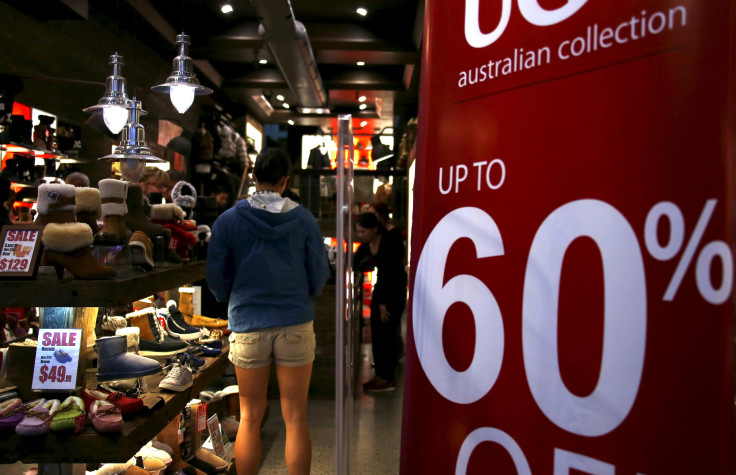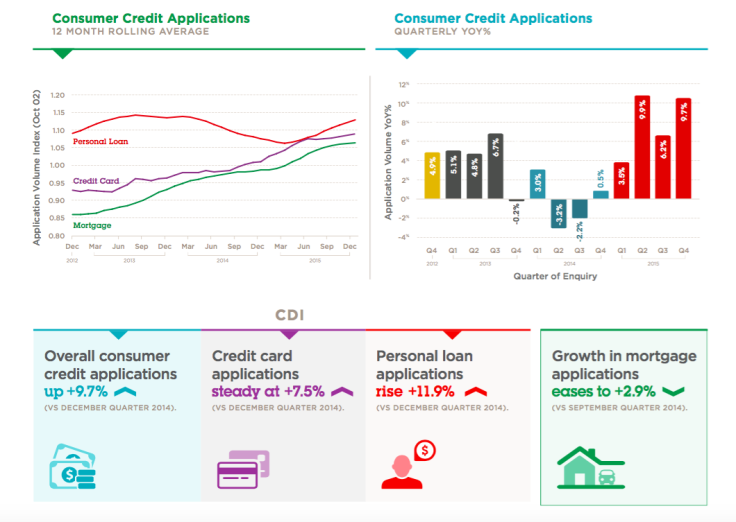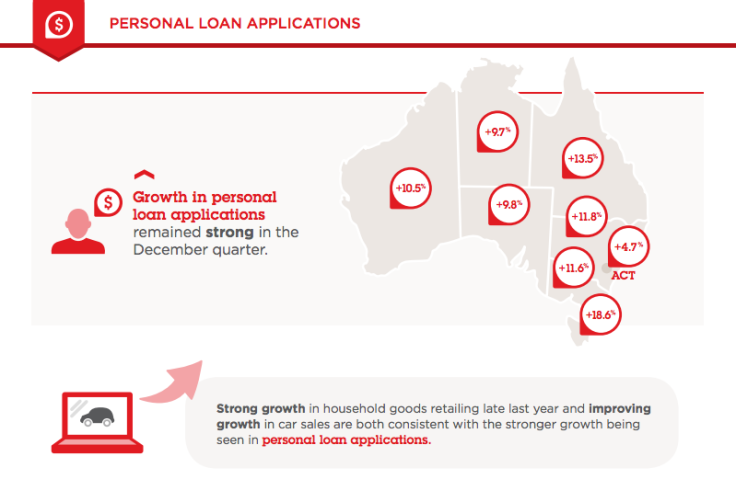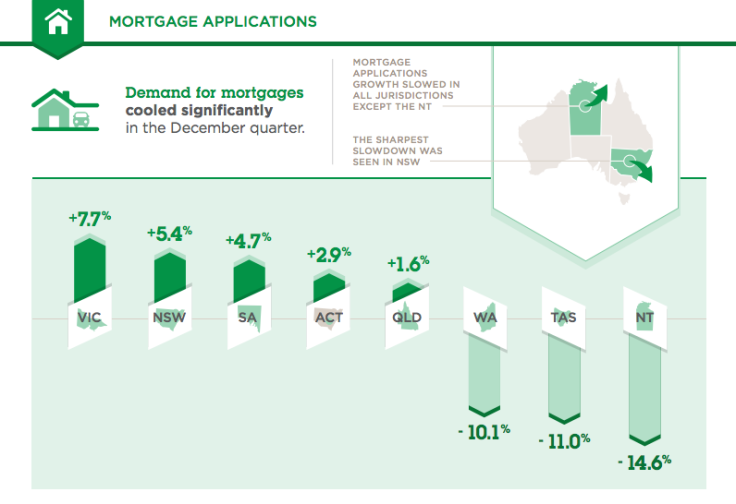Australians set to spend more as credit card, personal loan applications rise 9.7%

Australians are swapping mortgage forms for credit card and personal loan applications, with consumer credit demand rising 9.7 percent in the December quarter of 2015, as compared to the same period in 2014.
Credit card applications rose from 1.7 percent in the September quarter to 7.5 percent in Q4, while requests for personal loans soared 11.9 percent in December.

These trends, recorded in the Veda (ASX: VED) Quarterly Consumer Credit Demand Index, build on positive results from the previous quarter, in spite of a mining-related construction downturn. They can be attributed to a robust retail sector driven by low interest rates, a strengthening jobs market and rising consumer sentiments.
“Auto finance applications, in particular, have experienced an upswing, with car sales rising by 6.0 percent over the year to November 2015, helping drive the growth in personal loan applications,” Angus Luffman, Veda’s General Manager of Consumer Risk, said.

Luffman also points to the rising proportion of new personal loan applications coming from alternative lenders as an indication of the quality of applicants. In fact, the average age of borrowers with non-traditional finance providers is “creeping up as these lenders shift from being primarily a channel for younger consumers”.
“It’s still early but, if this trend continues, it may be an indication that alternative lenders are becoming a more mainstream option for borrowers,” Luffman added.

Cooling demand for mortgages
Although there are signs that consumer confidence is climbing, mortgage applications across Australia slowed to just 2.9 percent in the December quarter – the second significant decrease in growth for two consecutive quarters.
According to Veda’s mortgage application data, this slowdown was sharpest in New South Wales, but recorded in all jurisdictions except the Northern Territory, signaling slowing housing demand over the next six to nine months.
This is consistent with other indications of cooling property demand, including falling auction clearing rates and house prices in November and December.
RELATED: Stifling Sydney property market takes auction clearance rates to 3 year low
“The fall in mortgage applications suggests cooling conditions in the housing market heading into 2016, especially in light of the Australian Prudential Regulation Authority’s (APRA’s) changes to investment lending. It also suggests less support for retail spending from the housing market in the months ahead,” Luffman explained.

RELATED: APRA’s crack down on investor lending hits housing supply
Westpac set to increase home loan interest rates following new APRA regulations
Unlike the RBA's market indicators, the Veda Quarterly Consumer Credit Demand Index measures the volume of credit card and personal loan applications that go through the Veda Consumer Credit Bureau by financial services credit providers in Australia.





















